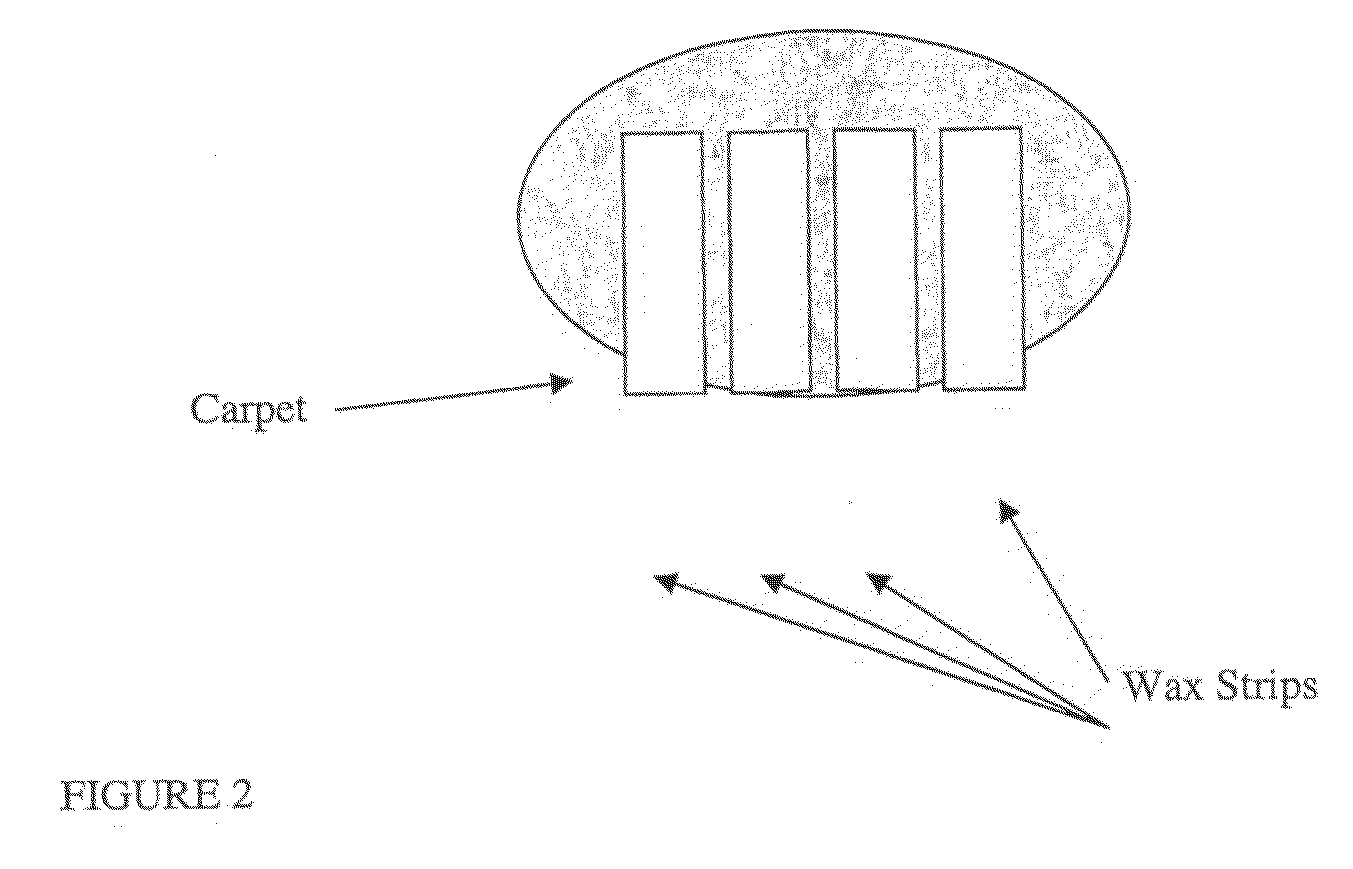Use of a cloth
a cloth and electrostatic charge technology, applied in the field of use of cloths, to achieve the effect of being seen by the owner
- Summary
- Abstract
- Description
- Claims
- Application Information
AI Technical Summary
Benefits of technology
Problems solved by technology
Method used
Image
Examples
example 1
[0052]The experiment was designed to look at the amount of hair shed by a panel of cats being groomed with electrostatically charged cloths over a two-week period.
Experimental Procedures
1. Trial Set-up
a) Animals, Location and Feeding
[0053]The trial was conducted using twelve cats. Each cat was housed in an individual lodge to ensure that the release of hair into the local environment was from one animal only. The lodges were maintained at a temperature of 22° C. with a natural daylight cycle. During the trial period, the cats were maintained on their standard diets and fresh water was available to them at all times.
[0054]No changes were made to the cats' normal routine with the exception that all forms of grooming were stopped for the trial period apart from that performed with the electrostatically charged cloths.
[0055]Of the cats used in the trial, five were female and seven were male. All were between the ages of six and twelve years.
b) Trial Design
[0056]Carpet Tiles—New carpet t...
example 2
[0082]This experiment was carried out to show that the electrostatically charged cloth is able to remove dander / allergen from an animal.
[0083]Before any samples were collected from the test cats, a Western blot was carried out using a sample of the electrostatically charged cloth that had been artificially spike using Fel-d1 standard. This was to investigate if it was possible to detect Fel-d1 from the electrostatic cloth. Four dilutions of the FEl-d1 standard were prepared in phosphate buffered saline (PBS) (Table 1).
TABLE 1Preparation of Fel-d1 to artificially spikethe electrostatically charged clothSampleFel-d1 standardPBSConcentration pg / ml11 μl080025 μl20 μl16035 μl of sample 220 μl3245 μl of sample 320 μl6.4
[0084]One square of electrostatically charged cloth (8 mm×8 mm) was used per prepared concentration of Fel-d1. Fel-d1 solution (1 μl) was pipetted directly onto the square of cloth and air-dried. The square of cloth was then added to 20 μl of 1× loading buffer. These were s...
PUM
 Login to View More
Login to View More Abstract
Description
Claims
Application Information
 Login to View More
Login to View More - R&D
- Intellectual Property
- Life Sciences
- Materials
- Tech Scout
- Unparalleled Data Quality
- Higher Quality Content
- 60% Fewer Hallucinations
Browse by: Latest US Patents, China's latest patents, Technical Efficacy Thesaurus, Application Domain, Technology Topic, Popular Technical Reports.
© 2025 PatSnap. All rights reserved.Legal|Privacy policy|Modern Slavery Act Transparency Statement|Sitemap|About US| Contact US: help@patsnap.com



